Beginner’s Guide to Cooking with Air Fryers in Small Spaces
Beginner’s Guide to Cooking with Air Fryers in Small Spaces. Most air fryers benefit from a quick preheat. If your model has a preheat function, use it. Otherwise, simply run the empty air fryer at your desired cooking temperature for 3–5 minutes
FOODIE
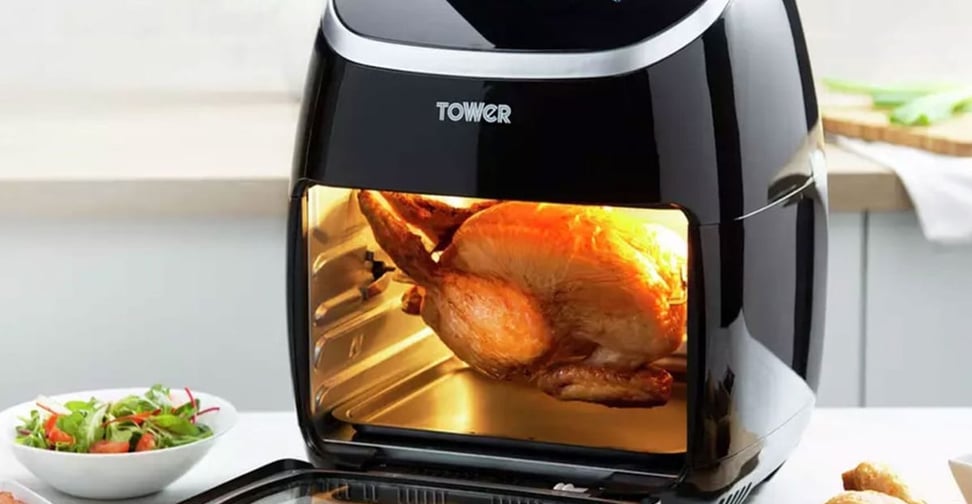

Air fryers have quickly become a must-have kitchen gadget, especially for apartment dwellers and anyone cooking in a small space. Compact, versatile, and energy-efficient, these countertop appliances promise crispy, delicious meals with minimal oil and fuss.
If you’re new to air frying or want to get the most out of your air fryer in a small kitchen, this guide is for you.
Why Air Fryers Are Perfect for Small Spaces
Air fryers are ideal for small apartments, student flats, and shared kitchens for several reasons:
Compact size: Most air fryers have a small footprint, making them easy to fit on limited counter space or store in a cupboard.
Multi-functionality: Many air fryers can bake, roast, grill, and even reheat leftovers, reducing the need for multiple appliances.
Quick and efficient: Air fryers heat up and cook food faster than conventional ovens, saving both time and energy.
Minimal mess: With little to no oil required, cleanup is easy-perfect for tight kitchens where space is at a premium
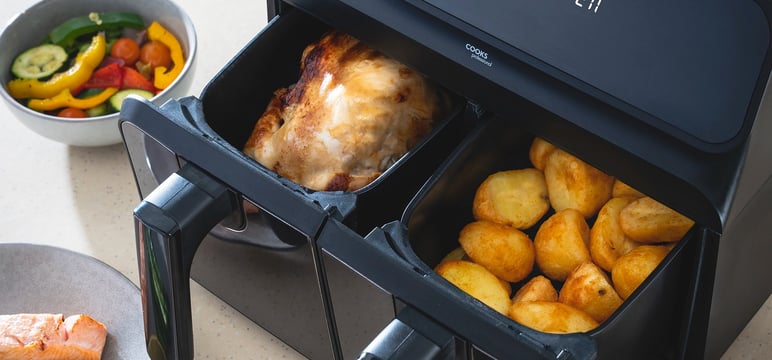

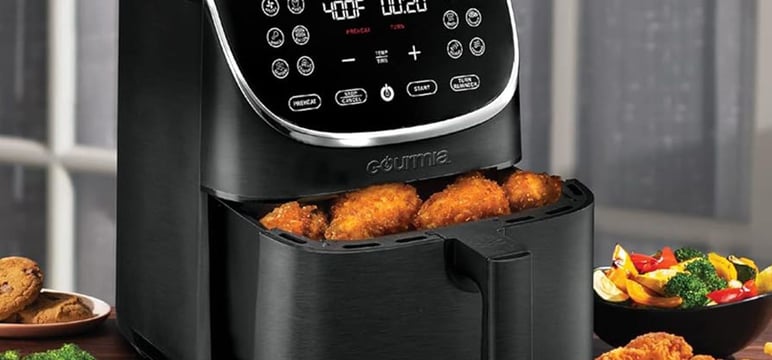

How Does an Air Fryer Work?
An air fryer uses a powerful fan to circulate hot air rapidly around your food, creating a crispy, golden exterior similar to deep frying-but with far less oil. This convection process browns food evenly and quickly, making it possible to enjoy your favourite fried treats in a healthier way.
Setting Up Your Air Fryer in a Small Kitchen
1. Choose the Right Spot:
Place your air fryer on a flat, heat-resistant surface with plenty of space around it for ventilation. Avoid using it right next to a wall or under low cabinets, as it needs airflow to operate safely.
2. Mind the Power Source:
Plug your air fryer directly into a wall socket-avoid using extension leads, which can be a fire hazard with high-wattage appliances.
3. Store Smart:
If counter space is tight, look for a model that’s easy to move and store between uses. Some air fryers are lightweight and compact enough to tuck into a cupboard or shelf when not in use.
Getting Started: Air Fryer Basics for Beginners
Step 1: Preheat the Air Fryer
Most air fryers benefit from a quick preheat. If your model has a preheat function, use it. Otherwise, simply run the empty air fryer at your desired cooking temperature for 3–5 minutes before adding food. This helps ensure even cooking and crispier results.
Step 2: Prepare Your Ingredients
Cut food into uniform pieces so everything cooks at the same rate.
Pat food dry with a paper towel to help it crisp up.
Lightly coat with oil (if needed) using a spray bottle or brush. This is especially helpful for vegetables and breaded items, but greasy foods like bacon don’t require extra oil.
Step 3: Arrange Food in the Basket
Don’t overcrowd: Place food in a single layer and leave space between pieces for air to circulate. Overcrowding can lead to uneven cooking and soggy results.
Use the right basket: Most air fryers come with a perforated basket or tray to maximize airflow and crispiness.
Step 4: Set Temperature and Time
Follow the recipe: Most air fryer recipes use temperatures between 180°C and 200°C (350–400°F) and cook in 10–25 minutes.
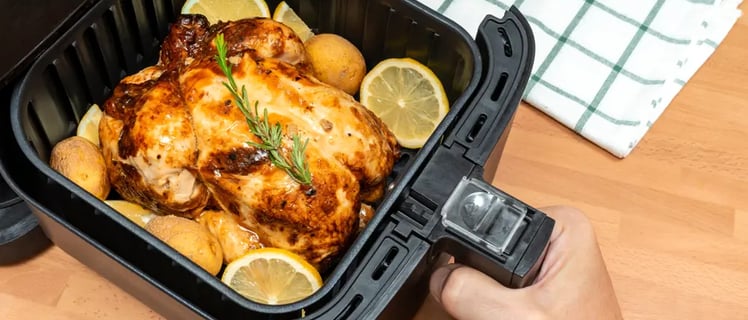

Convert oven recipes: If adapting a conventional recipe, reduce the temperature by about 10–20°C (25°F) and check for doneness a few minutes early.
Step 5: Shake or Flip Halfway
Shake the basket or turn food halfway through cooking for even browning. This is especially important for chips, vegetables, and smaller items.
Step 6: Check and Serve
Open the basket to check doneness: Air fryers cook quickly, so check early to avoid overcooking.
Let food rest: Some foods, like meat, benefit from a few minutes of resting after air frying to retain juices.
Step 7: Clean Up
Unplug and cool: Let the air fryer cool down before cleaning.
Wash the basket and tray: Most are dishwasher-safe, but a quick wash in warm, soapy water works too. Wipe down the exterior and heating element as needed.
Pro Tips for Cooking with Air Fryers in Small Spaces
1. Use Your Air Fryer for Reheating
Air fryers are excellent for reheating leftovers-pizza, chips, and fried foods regain their crispiness without getting soggy, unlike in a microwave.
2. Batch Cooking
If you’re cooking for more than one, do it in batches. Smaller air fryers cook quickly, so you can keep the first batch warm in a low oven while finishing the rest.
3. Multi-Tasking
Use your air fryer for snacks, mains, and even desserts. From crispy chicken wings to baked apples, air fryers are surprisingly versatile.
4. Minimal Oil, Maximum Flavour
A light spray of oil is often all you need. Too much oil can make food greasy and may cause smoke.
5. Ventilation is Key
Always use your air fryer in a well-ventilated area and avoid placing it right against a wall to prevent overheating and smoke.
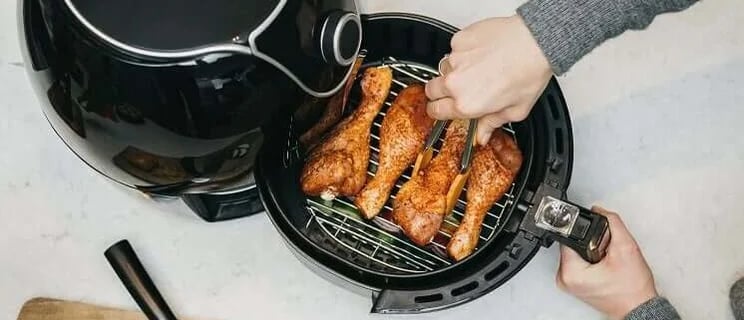

What Can You Cook in an Air Fryer?
The possibilities are nearly endless. Here are some beginner-friendly ideas to get you started:
1. Chips and Fries
Toss potato slices with a small amount of oil and seasoning.
Air fry at 200°C for 15–20 minutes, shaking halfway through.
2. Chicken Wings or Drumsticks
Season and air fry at 200°C for 18–22 minutes, flipping once.
3. Vegetables
Try broccoli, cauliflower, or courgette tossed with olive oil and spices.
Air fry at 180°C for 8–12 minutes.
4. Fish Fillets
Lightly breaded or seasoned fillets cook in 10–12 minutes at 180°C.
5. Frozen Foods
Nuggets, spring rolls, and chips go straight from freezer to air fryer-no thawing needed.
6. Toasted Sandwiches and Quesadillas
Assemble, brush lightly with oil or butter, and air fry for 5–7 minutes.
7. Baked Treats
Small cakes, cookies, or even fruit hand pies can be baked in the air fryer. Use silicone muffin cups or baking parchment.
For more recipe inspiration, check out [KitchenAid’s air fryer recipe collection].
Air Fryer Safety Tips for Small Spaces
Keep it ventilated: Leave space around your air fryer to prevent overheating.
Don’t use on unstable surfaces: Always place the air fryer on a sturdy, heat-resistant counter.
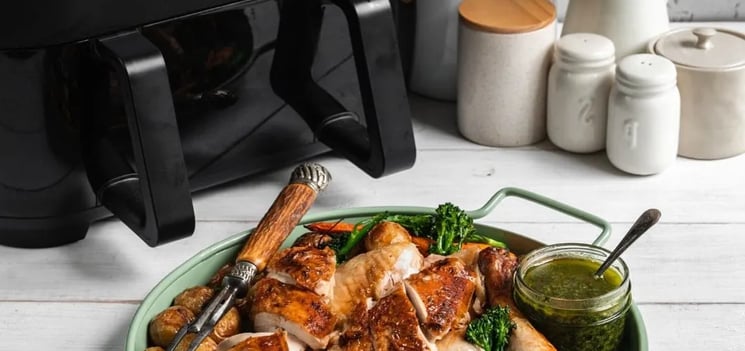

atch for smoke: Excess oil or food debris can cause smoking. Clean the basket regularly and use a slice of bread in the bottom to absorb grease.
Avoid non-stick sprays: These can damage the air fryer basket’s coating-use oil sprays designed for (Amazon) air fryers instead.
Unplug after use: For safety and energy savings, always unplug your appliance when finished.
Cleaning and Maintenance
Cool before cleaning: Let the air fryer cool completely before washing parts.
Wash removable parts: Most baskets and trays are dishwasher-safe. Otherwise, use warm, soapy water.
Wipe the exterior: Use a damp cloth to clean the outside and control panel.
Check the heating element: If you notice smoke or smells, check for food debris near the heating element and wipe gently.
Regular cleaning not only keeps your air fryer working well but also prevents unwanted odours and smoke.
Frequently Asked Questions..
Do I need to preheat my air fryer?
Preheating is recommended for best results, but it’s usually quick-just 3–5 minutes.
Can I use foil or baking paper in my air fryer?
Yes, but only in the basket and with enough weight (like food on top) to prevent it from blowing around and blocking airflow.
Is air frying healthier than deep frying?
Generally, yes! Air fryers use much less oil, reducing fat and calories while still delivering a crispy texture.
What size air fryer is best for a small kitchen?
A 2–4 litre capacity is ideal for one or two people and fits easily on most countertops


Final Thoughts
Cooking with an air fryer in a small space is a game-changer for busy renters, students, and anyone with limited kitchen real estate. With just a bit of prep and the right techniques, you can enjoy crispy,
flavourful meals and snacks-without the mess, excess oil, or need for a full-sized oven. Start simple, experiment, and enjoy the convenience and creativity that air frying brings to your compact kitchen.
Resources:
